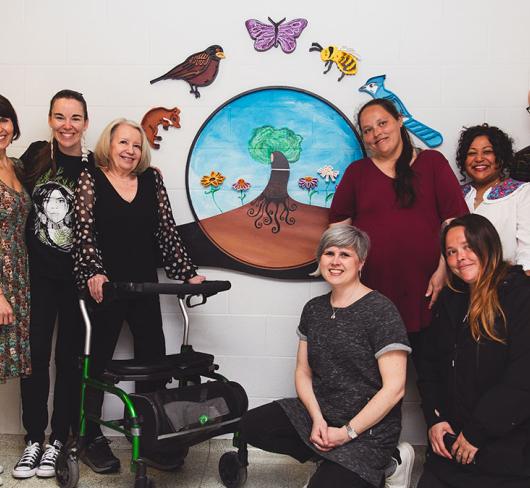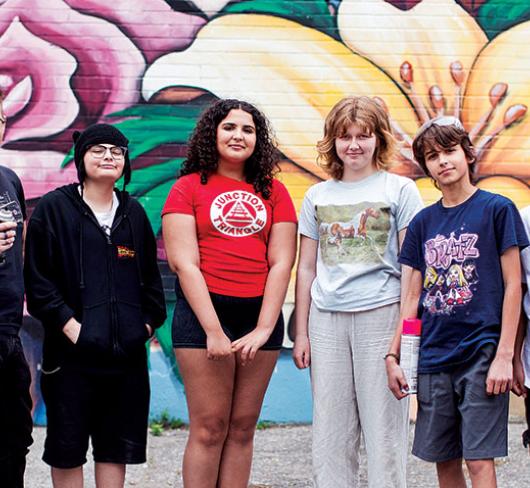
Mozart for the iPod Generation (Arts in the Classroom)
Feet shuffling to the beat, fingers snapping, tunes cranking – our students reluctantly stuff their iPods in their pockets as they enter our classrooms. Music is a passion for them: pop, rock, hip hop, and rap. They love the rhythms. They like the most controversial lyrics because they give voice to how they’re feeling about school, bullying, young love, and the establishment. This is powerful stuff, and as teachers we should be tapping into it. Our classrooms need to be a place where this passion, this music, is accepted, discussed, and celebrated.
I’ve always been a little nervous about teaching music because I’m not completely comfortable with that area of the curriculum. And because I do see the importance of music for my students, I’ve always worried that I would not be able to offer them what they deserved: a really rich musical experience.
It’s a good idea to seek support from other staff members when you’d like to grow in a subject area that is new or unfamiliar. There are many varied skills among staff in any given school. It’s also exactly what I model in my classroom: I have often used drama as a way to bring students together by using team-building techniques, so that they can celebrate one another’s strengths and support each other’s weak spots. I have discovered the most powerful statement about lifelong learning is made by the teacher who, as experimenter, creates a powerful atmosphere in the classroom that says, “It’s great to try something new.”
I wanted to try something new: something big and bold, something musical. I wanted to develop a greater comfort level for myself in this subject and I wanted to offer my students something meaningful.
I went to see our resident music teacher, Julie Broughton. She comes to me for drama support and I visit her for music guidance. During our second year at Lakeside we produced a dramatic and musical version of Dickens’s A Christmas Carol. And, as a result of Julie’s well-timed phone call, our students performed at the Stephen Leacock Theatre in Keswick instead of the school gym, delighting families and the community.
This experience gave me the courage to try working with musical work that Julie suggested– Mozart’s The Magic Flute.
Keeping in mind how important music is and what I might use to hook grade 5 and 6 students on Mozart, I decided the popularity of the High School Musical series would create the connecting bridge .
The class met in a circle. I told them we would be trying something new in music. We spoke a little about why music was important to us. I led them into talking about High School Musical 1and 2. What made these movies and the music such a success? What makes them appealing? How are the films like a story? We talked about plot, characters, and setting. We brainstormed and made some notes about the basic format.
A few students identified other musicals they had seen: Hairspray, The Wizard of Oz and Anne ofGreen Gables.
I told them I was going to introduce them to something even older: The Magic Flute, an opera written in the 1700s by a musical genius named Wolfgang Amadeus Mozart. We would listen to the CD. It would sound different from the music they were used to, but I asked them to listen with open minds and to try to identify the similarities to High School Musical. I thought that if I could help my students hang on to something they were comfortable with they might be willing to stretch and explore something new.
After listening to the CD we jotted down notes on chart paper about the basic plot and the names of characters to refer to later. Working either with a group of friends or on their own, students could choose one of these activities:
- Dramatize a scene from the opera.
- Create a mural poster highlighting one of the scenes.
- Design and create a 3-D model of a scene using modelling clay.
- Create a PowerPoint presentation of Mozart’s life.
- Write a song based on the opera. (This added option was suggested by a student.)
Students got into five small groups: one each for drama, mural, PowerPoint, and two for modelling clay (they chose different scenes to depict). No one chose to write a song and that was alright. I had added it to the list even though I thought writing a song might be pushing a little too hard. However, I always like to leave options open and it is important to let your students aim high. They always surprise you!
I had one student who was “not feeling the music.” He did not want to listen to the CD or participate in the followup activity. He chose to go to the quiet room where the special education teacher was working with small groups of students. I was puzzled. This was an outgoing and adventurous child who played guitar and had performed at fairs in a band with his brother and friends. When my students went to French, I went to see him in the quiet room. He did not seem able to tell me why he didn’t want to participate beyond saying that “Mozart’s not my thing.” I had to proceed carefully. I didn’t want to alienate him, but he had to understand it was his job as a student to make the best of an assignment even if it wasn’t his favourite task. He said he didn’t care and I could go ahead and give him a failing mark for music. I let him go to French.
I tried to encourage him the next day. No luck. The other students continued on in their groups. My reluctant musician went to the quiet room again. I shared the problem with the special education teacher and she put on the CD so he could listen to it.
That night I called his father and asked for his support because I wanted his son to have a good experience and a great term in music. I suggested that perhaps at home that night he could write a song (he was the student who had made this suggestion). He would need to write the song by himself, as he now no longer had a group to work with because all the others had almost completed their group work. I told him I hoped he would be able to help his son find a way to connect enough to produce something, so that he could participate in our large-group sharing. The father was extremely supportive and understanding.
The next day that boy came to school with a little chess game he had created by gluing paper characters to corks. Each of the pieces was a character from the opera and he gave a basic description of the plot. I smiled and said, “This is totally cool.” He smiled back.
It was impressive and rewarding to watch students working in groups, discussing the plot and the characters, sharing their opinions, and really immersing themselves in Mozart’s work. When they each presented to the whole group it was clear they had had a rich experience. And when the reluctant student joined us in the end, I was reminded of the lyrics from High School Musical, “We’re all in this together!”

